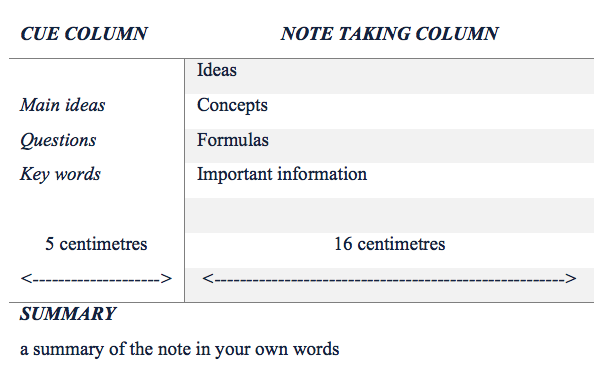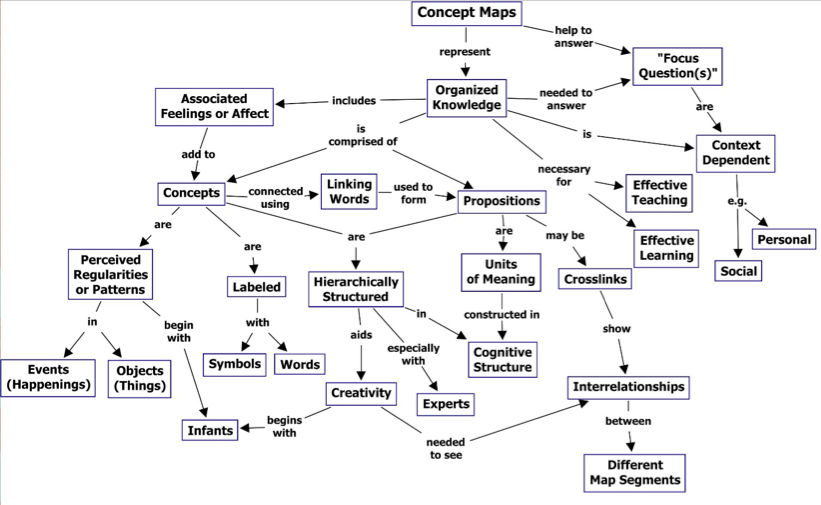This resource focuses on how we make notes in order to help develop understanding. It will help you recognise a couple of important things about the purpose and practice of writing notes, and how it relates to other academic practices. A resource on taking notes in lectures is included in the Further resources section at the bottom of the page.
What are 'notes' and why do we write them?
Notes are written records related to something being experienced – heard, read or otherwise seen. You take notes while you are in the process of reading or listening to someone else’s presentation of ideas, and you do it to help you identify and remember the most important information. But what you find ‘important’ depends on your own purpose, so taking useful notes is as much about clarifying why something is important to you as it is about identifying the important bits.
Taking notes well means not only identifying key new information but also connecting it to what you already know, and what you need to do, whether that is developing a report or argument of your own or having your knowledge tested in an exam.
Taking notes is a way of actively processing information so that it is remembered, understood, and readily available for other purposes later. It's the first step in a complex web of activity that good students aim to master.
Writing notes is often just a matter of summarising a talk or reading into a few key points, but in an academic context, it should also involve some critical thought about them - evaluating, prioritising, and 'joining dots'.
When does it help to write notes?
Taking notes can serve many purposes, or none…. notes will probably be most useful to you when you’re clear why you’re writing them. Writing while listening can help or hinder your ability to pay attention to a lecture, depending on whether you’re doing it with focus and purpose.
Writing while (or soon after) reading or listening to something is a good way of making it memorable, and making sense of what is being presented, putting into ‘your own words’. It’s a live comprehension check, and a way of creating memories around the keywords, so something ‘sticks’. Your notes can also record questions arising, that you might need to follow-up in further reading or conversation.
Your notes represent intellectual engagement in making sense of what you read or hear, and thinking about it seriously. They should help you make sense of information as you first encounter it, and should also be useful to you later, when reviewing for a test or developing a formal written or spoken response to a question on the given topic. Notes will be most useful when you’re focused on how you will use the information in an exam, or an assignment.
Writing notes is also an excellent way to practice summarising and paraphrasing, analysing and prioritising, and generally thinking critically about information being presented.
How can we take notes?
Taking notes is about identifying key words and key points in the flow of information, and relating them to something else. To do that, there are a few basic methods that have become popular… everyone has their own way of taking notes, and the proof of personal practice is best - but it's worth being aware that some methods of note-taking have been developed and researched for long enough to have stood the test of time – they’re proven to be effective and efficient, and that kind of collective experience is worth listening to. Taking useful notes involves summarising information accurately, and connecting it to a bigger picture or task.
Example
|
Methods |
Definitions |
Examples |
|---|---|---|
|
Cornell Method |
The Cornell method was devised in the 1950s by Walter Pauk. It is a powerful study tool for organising and revising lecture notes, as well as helping to improve your summarising and critical thinking skills. More information regarding how to create your own Cornell note using Microsoft Word. |
Create a two column table with the headings Cue column and Note taking column.
Under the Note taking column, add your:
At the bottom of this table write a Summary of the notes in your own words. |
|
Outlining Method |
An outline is a draft including main topics, sub-topics and supporting details. Well-structured contents make reviewing this type of note easy. |
Topic
|
|
MAPPING METHOD |
This method focuses on the use of diagrams and other types of visual representation of information such as mind map or concept map to help reinforce memory. The map provides an overview of the topic and the relationship between different concepts and ideas, which will help you organise, review concepts, and brainstorm for new ideas. |
Besides traditional pen-and-paper methods of note-taking, doing it digitally is popular and often most effective. There are various tools to help you take notes, such as Write (for Mac, iPhone, or iPad), Simplenote (for iOS, Android, Mac, Windows, Linux, and the web), Microsoft OneNote (included in the free Microsoft Office package available for downloading from the University of Wollongong's official website).

